What Is an Upsell? 11 Upselling Examples to Copy to Boost Sales

When I rowed the boat in a different direction in 2017, I went from selling services at Growbo, to selling info products in 2018.
We boosted customer lifetime value by 12,366%.
And about 40% of one month’s revenue back then came solely from one little magic strategy …
Upselling.
And what is an upsell?
Upselling is what McDonald’s does every time you order a Big Mac and they ask you: “Do you want to supersize it?”
It is like upgrading your business’ ability to mine value from your customers or clients. It is an offer on top of an offer that has already been made.
It simply lets you earn higher revenue per client or customer. And that means you don’t have to spend nearly as much time on finding new customers or clients when you do it right.
And as you’ll see in a second, upselling is actually very easy because you can turn what you already have into an upsell. No need to create a new offer from scratch.
And there’s a really cool strategy for doing this that most people don’t know about…
In today’s resource, you’ll learn:
- What is an upsell, what it isn’t, and how it’s different from cross-selling.
- 11 real-life upselling examples and case studies from big-name companies that you can use in your own business so that you can boost sales.
- And how to upsell to your customers or clients ethically and without “wounding” your brand.
First, let’s review the basics…
If you want to take the guesswork out of creating high-converting landing pages, ads, and more marketing tasks by using a battle-tested Swipe File of digital marketing examples from million-dollar companies, then you have to check out our Ultimate Swipe File for Business Sales Funnels
What is an Upsell? (And Why You Need to Do It)
An upsell is a technique where you entice your customer or client to buy more.
No matter if you’re selling products or services, you can do this by providing upgrades, expensive items, or other add-ons to their purchase to increase the dollar amount of the entire purchase.
With an upsell, you can maximize the value of a single customer or client.
So, why is this important, anyway?
Here’s why:
See this graph below?
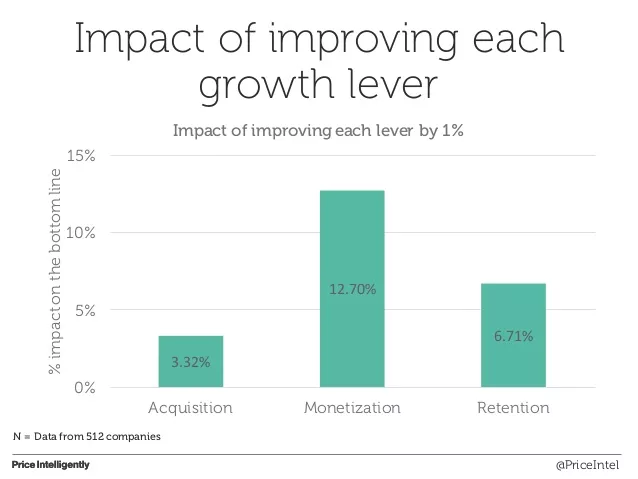
This is a graph of the 3 biggest growth levers for your company, according to research from Price Intelligently.
In a study of well over 10K blogs, they were able to find that by improving one of each of the 3 levers of growth (Acquisition, Monetization, Retention) by just 1%, companies were able to experience massively different results on their bottom line.
So, what’s the takeaway here?
Well, in the first place, a lot of businesses like yours spend an inordinate amount of time on customer and client acquisition, even though that’s actually the least cost-effective way to bring in more revenue.
Customer and client retention is great and all (with a 6.71% return on just a 1% increase). And increasing customer retention rates by 5% can actually increase profits by 25% to 95% according to Invesp.
But without a doubt, the undisputed winner was increasing the monetization of current customers.
Essentially, boosting the value of a single customer by just 1% led to an astounding 12.7% return on investment. 12.7%!
Upselling is simply one of the best possible ways for you to increase the value of each of your customers or clients
Now, to leverage the upsell, you need to present your customers or clients with additional services or products to actually increase the value of their order.
For example, instead of selling, say, a $150 cleaning service, you could present them with options to ‘up’ that purchase.
Perhaps allow them to also buy steam carpet cleaning for an additional $80. And window cleaning for an additional $50.
Suddenly, a simple $150 order is now worth $280.
See what is an upsell and how you should leverage it?
Now, you can’t upsell everyone, though. You will always have customers or clients who only want one service or product.
However, you can still upsell a majority of your site’s visitors if you include this strategy in the stages of your sales funnel (especially in your follow-up stage).
And equally importantly, you can upsell your customers or clients to higher-value purchases if you know how to do it properly.
Now before we get into the 11 real-life upselling examples and case studies, let’s take a look at one of the most common questions I get about upselling...
What’s the Difference Between Upsells vs. Cross-Sells?
So this is where things get a little bit murky…
See, upselling and cross-selling are frequently used interchangeably.
And it’s true, the two are pretty similar. But even still, there are a few noticeable differences that you should be aware of.
Here’s a quick breakdown to help you understand where upselling ends and cross-selling begins (and vice versa).
- Upselling: In its most basic terms, upselling is simply offering an upgraded version of the product or service your customer is already buying. If, for instance, they’re on the checkout page for a new computer and they see an offer for a better, faster, stronger version of that computer (like a RAM upgrade), then that offer is an upsell.
- Cross-Selling: A cross-sell is an addition. This is when you’re offered a similar product or service that you can add to your cart. So instead of a faster computer, a cross-sell might be adding a printer or Bluetooth keyboard to your order.
It’s worth noting that upselling makes up much more online sales than cross-selling—about 1,900% more according to Shopify.
Check out this graph on how much upsells and cross-sells make up of total online sales.

Did you happen to spot the teensy tiny difference between the two?
On average, upsells make up about 4% of total online sales while cross-sells make up about 0.2%.
Now, in this article, we are going to be talking about the 2 techniques together.
But even still, it’s worth remembering that upgrading your customer’s current order is going to be far more successful than just adding to it.
Now, let’s get into the upselling examples and case studies…
11 Profit-Maximizing Examples & Case Studies of Upselling
Here are some of the easiest-to-learn-from upselling examples I've found…
#1 Upselling Example & Case Study: Growbo --Turning Past Info Products' Customers Into Current Clients of Our Platform
What Sort of Results Were Achieved in This Upselling Example?
Well, our use of tripwires + upselling strategy here (I've talked about tripwire examples in the past) turned a $41 (average value customer) into a $5,070 value client for as long as they remained a client of our monthly subscription.
That was a 12,366% increase.
And it all started with one simple low-priced product: our $49 Sales Funnel Diagram Pack.
What Was the Business Context?
Shameless plug here, obviously.
At Growbo, a good chunk of our business actually comes from converting past customers into current clients of our monthly subscription.
How much?
Well, over this year, about 10% of our clients had bought one of our info products before deciding to delegate their digital marketing tasks to us.
And the secret here is: tripwires.
Tripwires are basically a low-price and low-risk offer to build trust with your customers or clients and to set the stage for a higher value upsell later on.
So after purchasing one of our lower-priced info products, we were able to establish trust and authority with the value our info products added to our customers.
One client, an advertising agency, began their relationship with us by buying our tripwire, The Ultimate Swipe File, and then buying our info products Sales Funnel Diagram Pack and Sales Funnel Blueprint.
After getting very valuable information about digital marketing from these info products, this customer could tell that we knew our stuff.
Consequently, we established ourselves as an authority in his eyes.
And while the info products he bought totaled to just $111, the trust that we built let us upsell this customer to one of our monthly subscription packages where we could get our clients’ digital marketing tasks done for them.
And this client brought in $23,989 in revenue which was a 21,512% increase in value.
Key Takeaways & Tactics to Model From This Upselling Example
The key takeaway here is obviously the benefit of using a tripwire in your funnel. No matter if you have a coaching funnel, or an agency funnel, or a SaaS funnel, or an eCommerce funnel, tripwires will work.
This is because a tripwire lets you overcome the most immediate (and most difficult) barrier to winning over a customer or client: that very first payment.
After you’ve overcome that obstacle with a low-priced offer (like our Sales Funnel Diagram Pack) and you’ve established yourself as an authority, it’s significantly easier to sell that customer or client on a higher-ticket product or service.
It’s exactly what we’ve done for 10% of our clients. And you can do it too.
#2 Upselling Example & Case Study: Relevant Cross-Sell Offer Improves Clicks By 870.73%
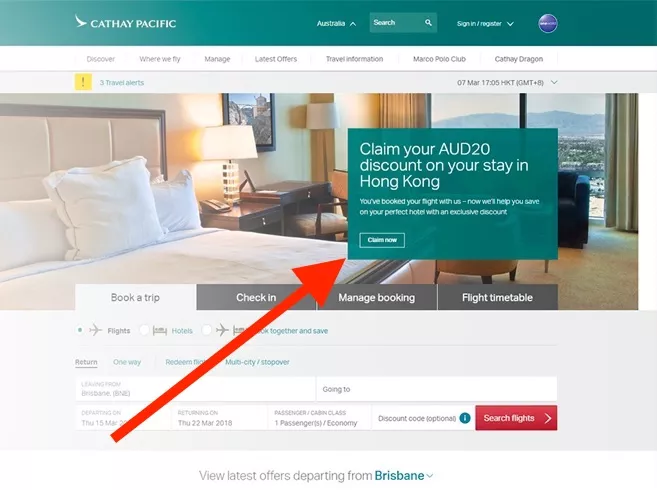
What Sort of Results Were Achieved in This Upselling Example?
Cathay Pacific saw an 870.73% increase in clicks after implementing this cross-selling campaign on their website.
What Was the Business Context?
This upselling example comes from our Proven Sales Conversion Pack—a catalog of 313 detailed case studies showing you how to optimize your digital marketing.
Cathay Pacific, an airline company, is one of Hong Kong’s most popular airways.
And when they started using a highly personalized cross-selling campaign for past customers, they saw some pretty astounding results.
This campaign focused on selling hotel bookings to recent customers at a discounted rate.
Once a customer booked a flight to a destination city, their browser was marked by a cookie.
As a result, when those customers returned to the homepage, they were greeted by the banner above offering an exclusive discount for a hotel booking (in this case, $20 off their stay in that particular city).
The result was a whopping 870.73% increase in banner clicks for Cathay Pacific—not bad at all!
Key Takeaways & Tactics to Model From This Upselling Example
The key takeaway here is that you can use personalization to increase conversions. Because personalization sells, even when it comes to your upsell techniques.
So the more personalized you can make your offer (“You bought X so you’re going to love Y!” or “Going to A? We can save you $$ booking your hotel there!”), the better.
So you should definitely model personalized marketing examples to dazzle your customers and clients.
#3 Upselling Example & Case Study: AppleCare’s Role in Apple’s Profitable Services Sector
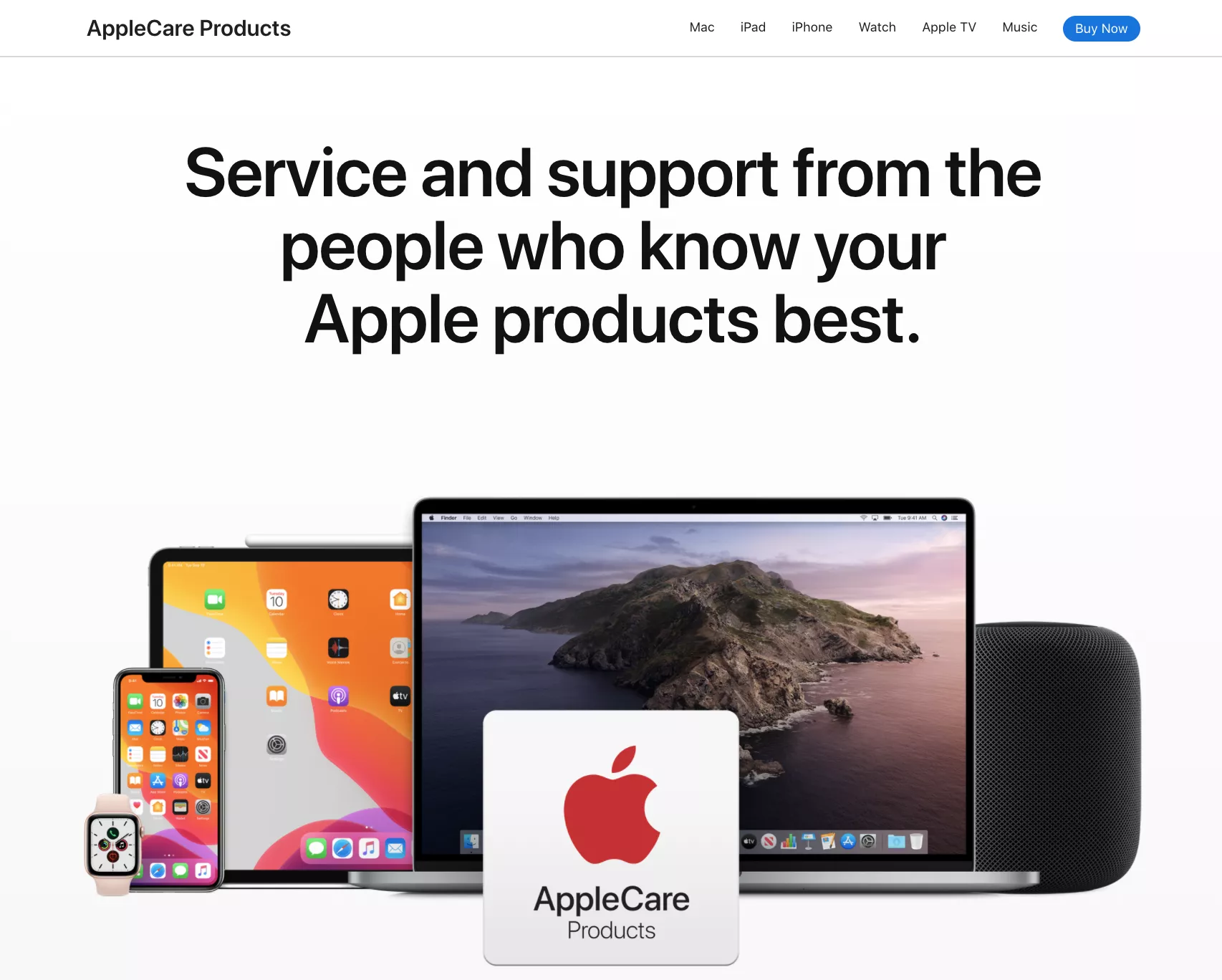
What Sort of Results Were Achieved in This Upselling Example?
Apple’s AppleCare warranty makes up a sizable portion of their most profitable sector: selling services.
And when it comes to warranties, Apple brought in nearly $6 billion in warranty sales in 2018 while only paying out around $1 billion in warranty claims.
It’s no wonder why Apple’s services business is growing 40% year over year with gross margins nearly doubling that of their product sector (63.7% vs. 32.2%).
What Was the Business Context?
We all know Apple is dominating the cell phone market.
But what a lot of people don’t realize is that their services industry is growing… and it’s growing fast.
In fact, according to Investopedia, their services sector is actually expanding 40% year over year.
These services include Apple Music, cloud storage, and (most importantly here) AppleCare.
AppleCare is basically the Apple version of an extended warranty. With it, you won’t have to foot the entire bill in case your phone, laptop, or headphones break on you.
Of course, this extended warranty comes at a price that fluctuates based on the product you’re insuring.
Now, in 2018, Apple paid out around $1 billion in AppleCare claims according to Warranty Week.

Compare that to the nearly $6 billion brought in during 2018 alone…

Now, of course, this $5 billion isn’t all profit.
Plenty of that revenue is meant to supplement other sectors of Apple that aren’t as profitable or help pay overhead.
But the fact is, offering a warranty is a great way to increase the value of a single customer.
Key Takeaways & Tactics to Model From This Upselling Example
If you are selling a high-ticket product like electronics, you should look into upselling your customers to a warranty program.
As Apple has demonstrated, a warranty program can become highly lucrative since many of the people who buy a warranty won’t ever need to use it.
The trick is to be careful with the limitations of your warranty. If you set them too loosely, you may have to pay out more than you’re bringing in.
#4 Upselling Example & Case Study: A Furniture Company’s 125%-275% Increase from a Single Cross-Sell
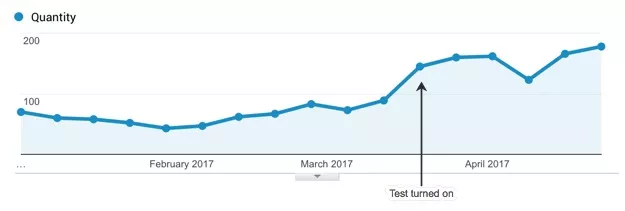
What Sort of Results Were Achieved in This Upselling Example?
By adding a simple leather cleaner cross-sell button to their checkout page, a furniture company saw up to a 275% increase in cleaner revenue.
That translated to an extra $2 million per year in revenue.
What Was the Business Context?
This furniture company had always sold specialized furniture cleaner on their website.
However, they weren’t getting the types of sales that they were looking for (around 40-80 sales per week).
So to beef things up, they started cross-selling this product on their checkout page after someone had selected a piece of furniture.
Here’s a quick mockup of what their new checkout page looked like.
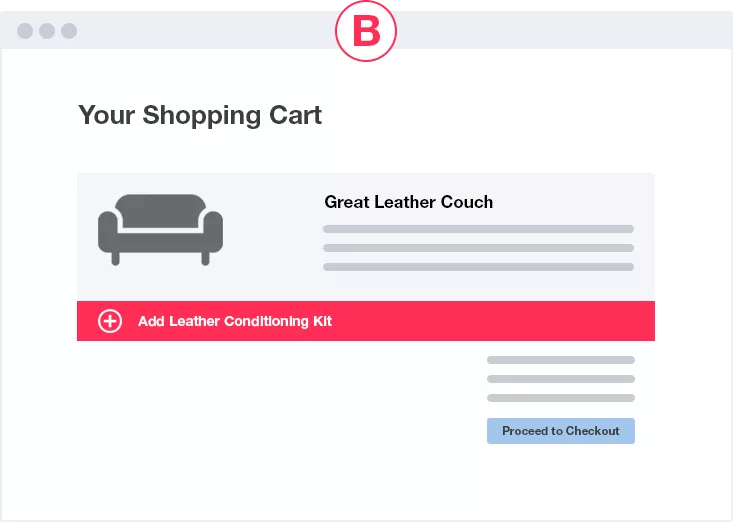
With just the click of a button, users could add a leather conditioning kit right to their order.
Once they implemented this change, they saw a massive increase in people buying the conditioning kit.
After 4 weeks, the company was consistently selling 150 to 180 kits per week (a serious jump from 40 to 80 kits per week).
Over the course of the year, they were able to bring in an extra $2 million!
Key Takeaways & Tactics to Model From This Upselling Example
The main takeaway here is that you want your cross-sell offers to be super easy to do.
Try to make it so that your cross-sells can be added to your clients or customers’ carts with just a single click of a button.
Additionally, the more aligned your cross-sell is with your main product or service, the simpler it’s going to be to sell your customers and clients on the value of it.
#5 Upselling Example & Case Study: Amy Portfield’s Strategic Downsell
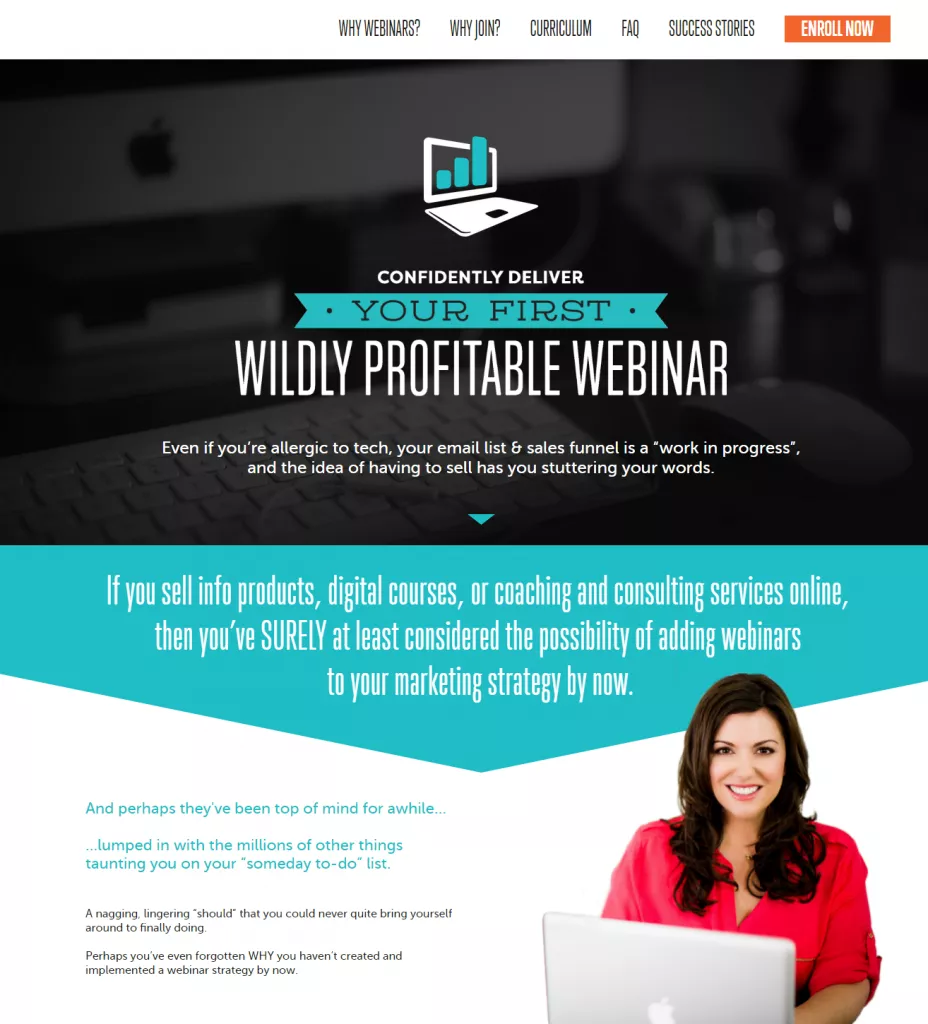
What Sort of Results Were Achieved in This Upselling Example?
Amy Porterfield reportedly made $170,000 from her upsells.
She sold a complimentary webinar template pack to go with a program of hers called "Webinars That Convert."
What Was the Business Context?
Amy Porterfield is a digital marketer who has mastered the art of the upsell.
For her Webinars Convert Program specifically, had a range of upsells to increase her customers' total value.
There were 3 upsells: (1) customers could get 2 templates (the lite pack), (2) all the templates at once for a one-time payment, or (3) all the templates at once with a payment plan.
Porterfield herself explains how her upsells work so well:
“I structured the upsell offer with a great deal of strategy. Here’s how it worked: if someone saw the offer and bought the five decks at full price, they would never see the two-pay offer or the lite version. You wouldn’t see the lite version unless you declined the first two offers.”

Here, Porterfield is describing a downsell after a user has continually refused an upsell.
And there are a few benefits of this downsell tactic.
First, it allows you to still upsell a customer that is unwilling to buy the higher-value upsell you’re offering (thus still increasing your per-customer value).
Second, Porterfield says she was able to glean more information about her audience segments from this series of upsells.
And with that segmentation, you could offer these prospects even more personalized offers down the road.
Smart stuff!
Key Takeaways & Tactics to Model From This Upselling Example
Developing a range of upsells that vary in price is a great way to create value for a variety of customers.
This fits well with the Law of Range (one of the 11 Laws of Sales Funnel Physics), which basically states that the more options your customers have, the more likely they’ll be to buy from you.
And the principle applies to upsells here too.
#6 Upselling Example & Case Study: GoDaddy’s Sort-of Aggressive Checkout Upsell

What Sort of Results Were Achieved in This Upselling Example?
GoDaddy’s upselling tactics have helped them become one of the leading website hosting companies with annual revenue of $4.1 billion in 2022.
But most importantly, their add-on upselling strategies have helped them increase their average revenue per user by over 93% over the course of 2011 to 2022.
What Was the Business Context?
Few domain name sellers are as prolific as GoDaddy.
If you purchase a domain from them, they will try to upsell you.

You will be given the option to host a website or make your own website. GoDaddy will also try to get you to create a new email tied to the domain name you’re buying.
They will even offer a discount on the domain you’re buying if you add it to your current order.
Some people find GoDaddy’s upsells a little on the pushy side, but they’re smart for a few reasons.
First, they’re unavoidable.
You can’t finish the checkout process without seeing one of the upsells.
Second, they’re good deals.
You’re looking to buy a domain name, but now, with one of these upsells, you don’t have to, since the domain is free.
Not only that, but you can also get web hosting, an email address or a website builder for cheap.
The appeal of these offers would make any would-be GoDaddy customer stop for a second to decide if they want these deals.
Key Takeaways & Tactics to Model From This Upselling Example
While I don’t recommend it in every scenario, aggressive upsells that can’t be avoided can, in fact, be profitable without ruining your brand’s reputation.
GoDaddy walks that fine line pretty well.
Additionally, they also offer products or services that mesh well with what it is you’re buying.
As a result, people realize that they’ll probably need these other services when setting up a website too, so why not buy them now?
The takeaway, then, is to hit the checkout process hard with upsells and cross-sells and make sure your offers align with what it is people are buying.
#7 Upselling Example & Case Study: Amazon’s “Frequently Bought Together” Recommendations

What Sort of Results Were Achieved in This Upselling Example?
Amazon’s personalized product recommendations are estimated to be responsible for a whopping 35% of their yearly revenue.

What Was the Business Context?
If you browse around on Amazon enough and add a single product to your cart, Amazon may recommend 2 more with its “Frequently Bought Together” feature.
These products are related, such as this example here.
The customer bought a Canon PowerShot camera and got recommended a SanDisk flash memory card and a camera case.
Amazon makes it easy to buy all 3 products, as there’s a tempting yellow “add all three to cart” button. If you’re not sure you want to buy, you can also click the “add all three to Wish List” button.
Amazon also provides links to the other two products so you can read their features and reviews in more detail.
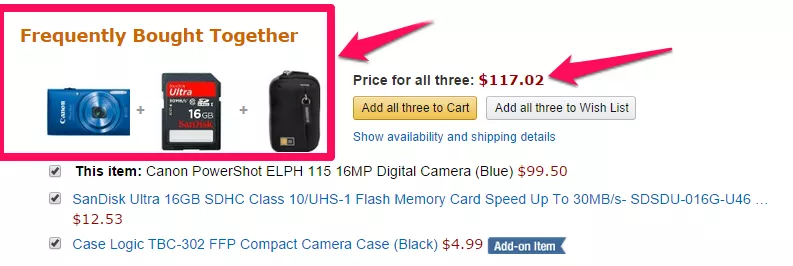
The example above is one of many. You may see recommendations for similar books:

Or phone accessories:

Let’s go back to the first example, the digital camera and related accessories.
If you’re buying a camera from Amazon, you might eventually want to buy a flash memory card, but it would take time to find one you liked. Amazon takes the guesswork out with an algorithm that’s based on customer shopping behavior.
Of course, the algorithm is not perfect, but most customers who get “Frequently Bought Together” recommendations will see related items.
Also, unlike some of the other upsell examples so far, Amazon’s isn’t pushy. With the GoDaddy upsell, for instance, you have to make an effort to bypass their upsells.
With Amazon’s upsell, if you don’t care about the related products, you can scroll past the recommendations to check out.
Key Takeaways & Tactics to Model
This might be beating a dead horse a bit but… personalization sells.
The beauty of the Amazon cross-sell is that it picks out products that you are more likely not going to find value in based on your past purchases.
Plus, it also recommends products that are related to what you’re looking at right now (there’s the “alignment” aspect again).
And finally, Amazon also uses the One-Click Upsell strategy, making adding an item to your cart as simple as just a single click.
#8 Upselling Example & Case Study: Train Baseball’s One-Click Upsell

What Sort of Results Were Achieved in This Upselling Example?
This simple baseball blog grew its revenue by an astounding 385% by mastering the one-click upsell strategy.
What Was the Business Context?
This case study was featured on the SamCart blog.
Train Baseball started out as a tiny baseball blog that sold training guides.
It was a passion project and a time suck at the same time (as most passion projects are).
But it wasn’t making money.
In fact, it was bringing in just $810 per month, not nearly enough to live on.
But after the owner took a course on one-click upsells and implemented them in his business, he started to see some real profits.
Added to that, he also started creating more products that he could upsell current customers with.
A combination of making it easy to upsell current customers on other products and increasing the range of upsells he had turned his $810 per month business into a $3,120 per month profit center.
Key Takeaways & Tactics to Model From This Upselling Example
We talked about it before in the Amazon example but the easier you can make it for customers to add new products to their cart, the better.
The one-click upsell strategy means that your prospects don’t have to spend time re-entering their credit card info, searching for the right product, and navigating through your website again and again.
But another takeaway from this example is that the more variety you can offer for your customers with upsells, the better.
#9 Upselling Example & Case Study: NameCheap’s Shopping Cart Add-On Upsell
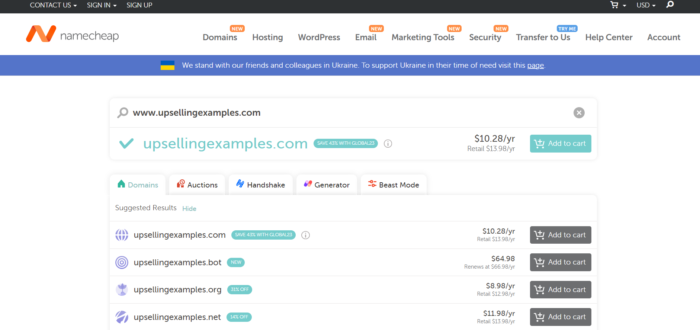
What Sort of Results Were Achieved?
NameCheap has quickly become one of the most popular website hosting companies today.
Take a look at their growth over the past decade…

Plus, they are now used by more than 5.5 million websites according to Built With.
And part of that growth is undoubtedly due to their upselling strategy.
What Was the Business Context?
In this example, you only have one item in your cart—your domain name.
At checkout, you’re confronted with additional add-on possibilities.
SSL Encryption, 1 Year Free OX Personal Email, Full-Featured Web Hosting . . .
The list goes on.
This is what’s called an “Order Bump.”
All that extra added-value is just a click away. It’s hard to say no.
You might not have considered those other products before.
But now you’re making a buying decision.
You’re already spending money, so why not get the add-ons?
The add-ons are framed as small purchases—even if they surpass the price of the original purchase.
With this setup, you might feel like you’re missing out by not selecting another product.
So most people will tack on 1 or 2 additional services.
All of this creates one great upsell.
See how that works?
The ‘add-on’ upsell can easily increase the order value by offering relevant products at the point of purchase.
Key Takeaways & Tactics to Model From This Upselling Example
Strong alignment with the core offer is the most notable takeaway from the Namecheap example.
All of their offers (web hosting, SSL security, email hosting) align great with their core offer of buying your own domain.
And as with other upsells we’ve looked at today, they’re all super simple to add to your order at the checkout screen.
So keep it aligned and keep it easy to add to your customers’ carts.
#10 Upselling Example & Case Study: Amazon’s Subscribe & Save Upsells

What Sort of Results Were Achieved in This Upselling Example?
Some companies using Amazon’s Subscribe & Save program have reported as many as 10 to 30% more returning customers.

What Was the Business Context?
In case you’ve been living under a rock for the past few years, the “Subscribe & Save” is basically an option on Amazon that allows customers to subscribe to a recurring order of the same product in exchange for a discount.
This model is becoming increasingly popular with the massive growth in eCommerce platforms.
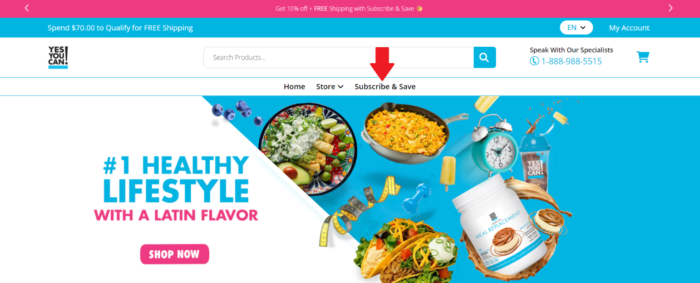
In fact, worldwide subscription box market size reached $32.9 billion in 2023.And the market value is expected to reach $73.6 billion by 2028. This according to the International Market Analysis Research and Consulting Group.
Also, Amazon’s Subscribe & Save model actually has the highest number of overall subscribers in the world according to research by McKinsey.

In fact, we even implemented this model with one of our own clients…

The main benefit of going this route is that it helps you retain customers you already have by automatically sending them a new order every month or so.
Sure, they’re getting a discount right now. But if they see the value in your product, they’re much more likely to pay for 2, 3, or 5 months when they don’t have to go through the process of buying it each and every month.
Key Takeaways & Tactics to Model From This Upselling Example
Consider adding a “subscribe and save” option to your products.
It makes it significantly easier to retain customers and the small discount you offer at the start will often be peanuts compared to the recurring revenue you earn from this tactic.
#11 Upselling Example & Case Study: Product Protection Plans

What Sort of Results Were Achieved in This Upselling Example?
Many companies on eCommerce sites like Amazon have started using protection plan upsells to give their customers more value.
Insurance companies like Allstate have even created subsidiaries (like SquareTrade) that specifically handle product protection plans.
In fact, SquareTrade has a whopping 70 million active plans, showing that they’re filling a solid market need.
What Was the Business Context?
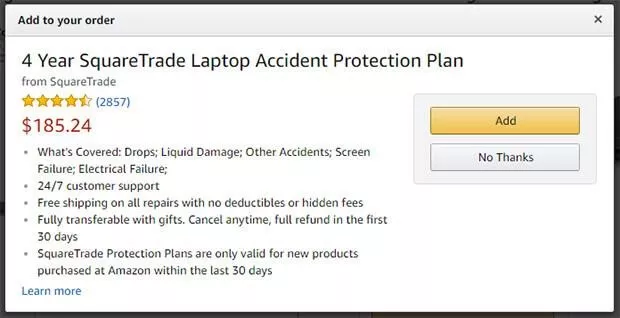
Many retailers, from Best Buy to Amazon and even Live Nation, offer protection plans for more expensive products.
You can often get coverage for a year and sometimes even up to five years. You can even get a replacement product if yours is lost, stolen, or broken.
Of course, these protection plans aren’t free.
In the Amazon protection plan for a SquareTrade laptop pictured above, the customer gets 24/7 customer support, as well as a replacement if the computer experiences electrical failure, screen failure, liquid damage, falls and other damage.
This is for an additional $185.
If you’re buying something expensive, of course, you’d want to protect it.
You hope you’ll never drop your phone or laptop, but if you do, you know that you’d be covered under your protection plan.
In that regard then, you’re buying value in the form of peace of mind.
In other words: you can worry less! That’s powerful.
These plans are also popular for concert tickets. Imagine you just scored front-row seats to see your favorite band. Do you really want to go to the show without a protection plan in case you get sick, the tickets are misplaced or something else happens?
Nope.
This is an upsell that essentially sells itself. Not everyone will find a protection plan essential, but plenty of people will.
Key Takeaways & Tactics to Model From This Upselling Example
Similar to Apple’s AppleCare, offering a protection plan for your high-cost items is a great way to increase the average order value of your customers.
Upselling Tool Recommendations to Help You Increase Your Customer Value
Okay, okay, so upselling is great. Upselling is profitable. And upselling should certainly be one of your company’s main focuses.
But how do you do it?
Well, there are a few tools in particular that we love for upselling.
In fact, they are one of the 17 super-affordable digital marketing tools.
And without a doubt our 3 favorite upselling tools are…
SamCart
As I mentioned above, SamCart’s 1-click upsells make it super easy to get your customers to up their cart value quickly and simply before checking out.
ActiveCampaign
Use ActiveCampaign If the scenario setup makes it simple to target customers who have bought your product and upsell them to a higher value item further down the line.
Leadpages
Making a high-converting landing page is a snap with Leadpages. In fact, we use it with most of our clients. As a result, you can create a high-quality upsell landing page before checkout in as little as 10 minutes.
Potential Pitfalls to Avoid When Upselling: How to Upsell Ethically (and w/o Hurting Your Brand)
Now, one of the biggest problems that people have with upselling is that they’re afraid they’re going to come off like a used car salesman trying to rip you off on the undercoating.
And it’s understandable—there most certainly is a “wrong” way to go about upselling to your customers.
Being overly salesy, dishonest, or just all around skeezy can have the dual effect of both hurting your brand and not winning over customers.
Because in all honesty, most people are highly attuned to whether or not they’re being sold to.
But all that being said, there’s also a right way of upselling. And here’s how to do it.
- Don’t Take Advantage of Confusion: One sneaky tactic is to not make it clear that the original order is complete before offering the upsell. So even after the order is complete, customers may be redirected to a page that says “Wait, your order is almost complete. But don’t you want…” The user may think that they still have to go through more steps in order to check out, when really they don’t. This is a good way to trick customers into adding more to their carts, but it’s shoddy businessmanship and ethically questionable. Don’t do it.
- The Number of Upsells Should Be Reasonable (2 or 3 MAX): Don’t overdo it. The more upsell pages your customers have to trudge through, the more annoyed they’ll be and the less likely it is that they will buy at the end of it all. Try to stick to 2 or 3 upsell pages max.
- Make It Easier to Say “No Thanks”: Want to know how you can lose my business in nearly an instant? Hide the “No Thanks” button from me. Hiding the opt-out button is a sneaky tactic that will only tear down the integrity of your brand. Don’t do this either. Ever.
- Offer Comparable Value: The value of your upsell should be similar to the value of your original offer. The closer these prices are to each other, the more likely your customers are going to be to add on to their order.
- Be EXTRA Transparent & Avoid Hype: Upsold products are prone to even more buyer’s remorse than the original product they were attached to. And if your customers don’t see the value in the upsold product, they’re going to be much more likely to request a refund. That’s why it’s especially important to be as transparent as possible about what your upsold product is. Because if people’s expectations aren’t met with your upsold product, you’re likely going to have to foot the cost for a refund.
Conclusion
If you want to take the guesswork out of creating high-converting landing pages, ads, and more marketing tasks by using a battle-tested Swipe File of digital marketing examples from million-dollar companies, then you have to check out our Ultimate Swipe File for Business Sales Funnels
So there you have it!
11 real-life examples of upsells done right along with some of the key takeaways from each that you can start using today.
- Growbo: Turning Past Customers Into Current Clients
- Relevant Cross-Sell Improves Clicks by 870.73%
- AppleCare’s Role In Apple’s Profitable Services Sector
- A Furniture Company’s 125-275% Click Increase from a Single Cross-Sell
- Amy Portfield’s Strategic Downsell
- GoDaddy’s Aggressive Checkout Upsell
- Amazon’s “Frequently Bought Together” Recommendations
- Train Baseball’s One-Click Upsell
- NameCheap’s Shopping Cart Add-On Upsell
- Amazon’s Subscribe & Save Upsells
- Product Protection Plans
And on top of those real-life case studies, I also showed you 3 tools that make upselling a snap and 5 upselling pitfalls to avoid like the plague.
And if you want to automate all of your marketing (including your upselling strategy) and operations needs, then you must try Growbo: The Future of Business Growth Automation.
Growbo is your AI team to handle all your marketing and business ops needs—at a fraction of the cost and with no hiring headaches.
Learn more here or join our waitlist so that you can be one of the first to automate your growth with Growbo.
Now, let me ask you, what kind of luck have you had with upselling your products or services? Which techniques have worked out the best for your business? And which of these techniques do you plan to start using?
Let me know in the comments below.
And as always,
Keep Upsellin’, stay focused.















